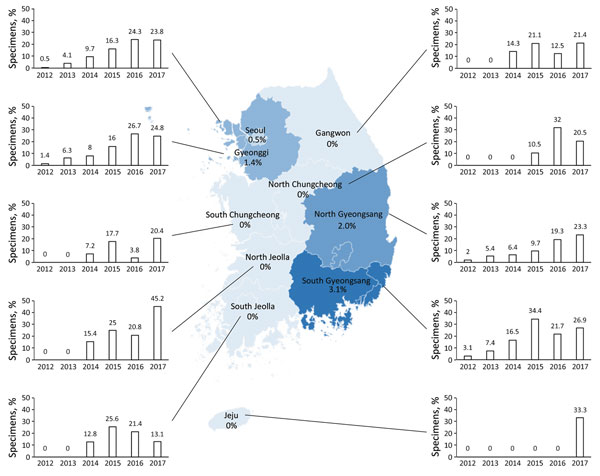Volume 25, Number 3—March 2019
Research
Emergence and Spread of Cephalosporin-Resistant Neisseria gonorrhoeae with Mosaic penA Alleles, South Korea, 2012–2017
Figure 1

Figure 1. Distribution of specimens positive for a Neisseria gonorrhoeae mosaic penA allele, by year and province, South Korea, 2010–2017. Numbers shown in each province denote the proportion of samples positive for a mosaic penA allele in 2012. The bar graphs describe the percentage of specimens positive for a N. gonorrhoeae mosaic penA allele in each province and year. Seoul is the capital city of South Korea, and Gyeonggi Province contains an international airport.
1Joint senior authors.
Page created: February 19, 2019
Page updated: February 19, 2019
Page reviewed: February 19, 2019
The conclusions, findings, and opinions expressed by authors contributing to this journal do not necessarily reflect the official position of the U.S. Department of Health and Human Services, the Public Health Service, the Centers for Disease Control and Prevention, or the authors' affiliated institutions. Use of trade names is for identification only and does not imply endorsement by any of the groups named above.